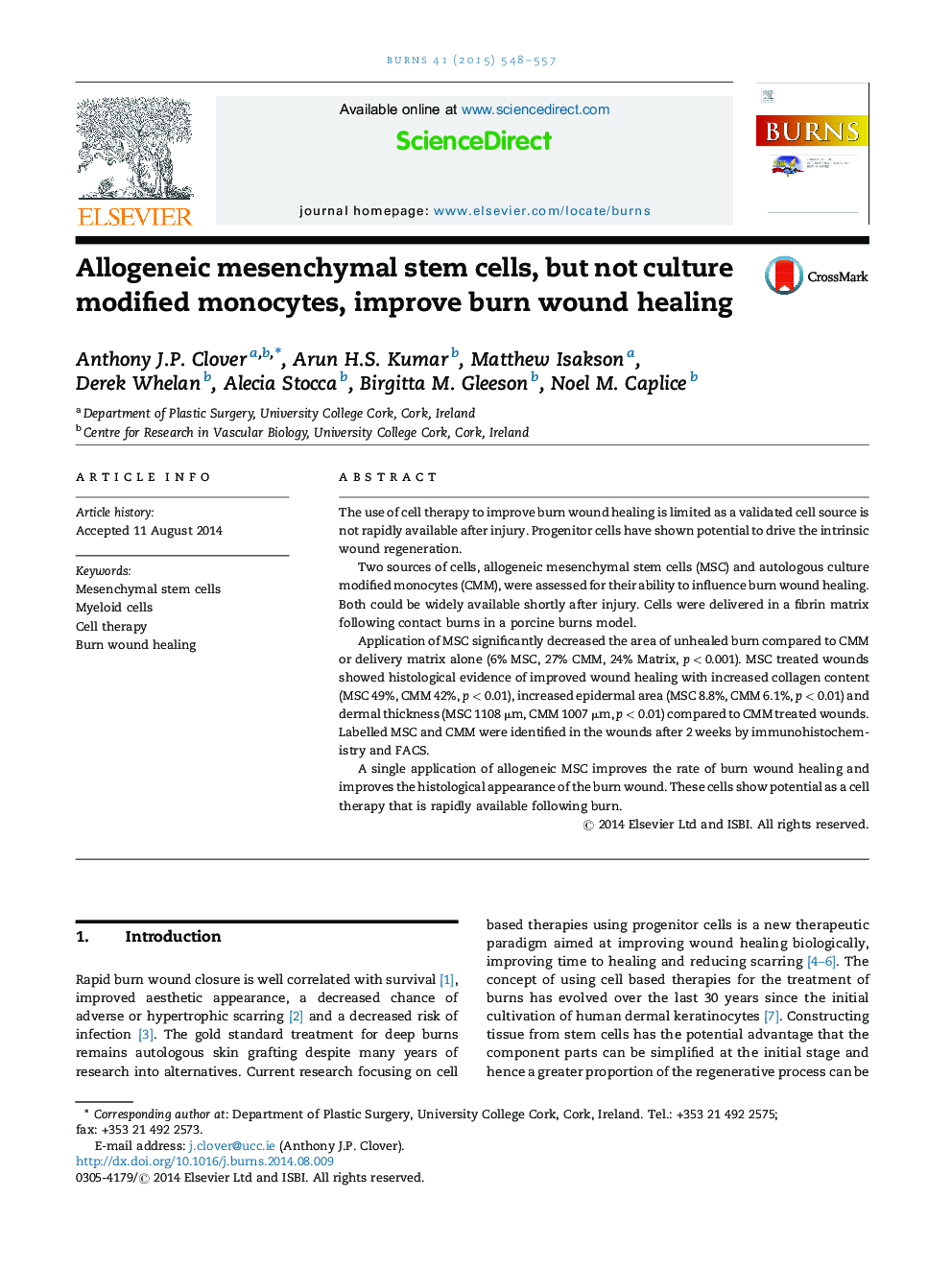| Article ID | Journal | Published Year | Pages | File Type |
|---|---|---|---|---|
| 3104332 | Burns | 2015 | 10 Pages |
The use of cell therapy to improve burn wound healing is limited as a validated cell source is not rapidly available after injury. Progenitor cells have shown potential to drive the intrinsic wound regeneration.Two sources of cells, allogeneic mesenchymal stem cells (MSC) and autologous culture modified monocytes (CMM), were assessed for their ability to influence burn wound healing. Both could be widely available shortly after injury. Cells were delivered in a fibrin matrix following contact burns in a porcine burns model.Application of MSC significantly decreased the area of unhealed burn compared to CMM or delivery matrix alone (6% MSC, 27% CMM, 24% Matrix, p < 0.001). MSC treated wounds showed histological evidence of improved wound healing with increased collagen content (MSC 49%, CMM 42%, p < 0.01), increased epidermal area (MSC 8.8%, CMM 6.1%, p < 0.01) and dermal thickness (MSC 1108 μm, CMM 1007 μm, p < 0.01) compared to CMM treated wounds. Labelled MSC and CMM were identified in the wounds after 2 weeks by immunohistochemistry and FACS.A single application of allogeneic MSC improves the rate of burn wound healing and improves the histological appearance of the burn wound. These cells show potential as a cell therapy that is rapidly available following burn.
